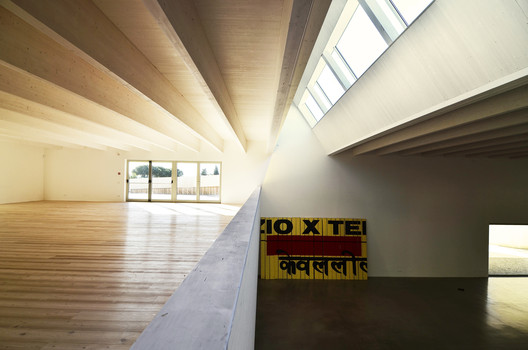
-
Architects: Toti Semerano
- Area: 2000 m²
- Year: 2017
-
Photographs:Mario Lensi , Stefano Zanardi
-
Manufacturers: Carlo Gramegna, Edilsavy snc, Pitardi Cavamonti srl, RUBNER

Text description provided by the architects. The basic idea of the project is to create a core set, which consists of one studio atelier that has the potential to evolve gradually over time into a more complex organism; a center of contemporary arts that can host exhibitions and performances in close relationship with the territory and its specificity, with great attention to art academies and in close contact with the workshops at the place.

A wall-fence- path surrounds and interacts with the essential volumes of the atelier-marking empty spaces ... spaces for art.

Working to dig-subtraction in the original profiles of the hill, the atelier spaces reveal themselves gradually with the thrill of discovery where natural light draws changing scenarios in constant relationship with the surrounding landscape. The wall-fence- path is configured accordingly, not as antagonistic to the landscape, but wants to integrate with the surrounding environment through a dialogue of materials and transparencies. In order to perceive the artwork displayed by different points and heights, the project is just taking place from a ramp, which with its gently sloping spiral, energizes and connects all outdoor spaces, penetrates the main body, it laps the wide terraces and finally descends into the hillside in order to become an underground path to support the future space expansion expected entirely dug into the hillside. It is a botanic architecture that will follow the reed degradation cycle, which mixed with the local land covers its surface, ideal support for the growth of vegetation that gradually will replace it; leaves flowers and fruits ... why not? A skin alive never the same over time.

The architecture willingly renounces to remain immutable in time but always gives more space to the vegetation, on the contrary, adjusts itself to be invaded.

The project for its vocation pays great attention to the materials and the use of sustainability criteria, in particular has been designed to use wood for supporting structures and a part of the external cladding. Stone, natural fibers, lime and clay to the other external coatings.



































